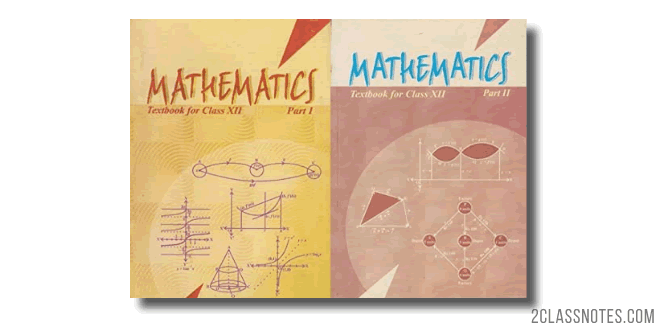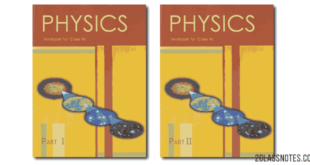| School Name: | Himalaya Public School, Sector 13, Rohini, Delhi 110085 India |
| Class: | 12th Standard (CBSE) |
| Subject: | Mathematics |
| Time Duration: | 03 Hours |
| Maximum Marks: | 80 |
| Date: | 09 / 12 / 2022 |
General Instructions: 12th Post Mid Term Math Exam
- This question paper contains five sections A, B, C, D and E. Each section is compulsory. However, there are internal choices in some questions.
- Section – A has IS MCQ’s and 2 Assertion-Reason questions of 1 mark each.
- Section – B has 5 very short answer (VSA) type questions of 2 marks each.
- Section – C has 6 short answer (SA) type questions of 3 Marks each.
- Section – D has 4 long answer type questions of 5 Marks each.
- Section – E has 3 case study questions (4 marks each) with sub parts.
Download PDF File: 12th Post Mid Term Math Exam 2022-23
1,146 KB – Download Now!Section – A
Multiple Choice Questions
Q.1. A box contains 4 white, 3 black and 5 red balls are drawn one by one with replacement. Then P (4 white balls) is
P.T.O.
12th Class Mathematics Course Structure:
| Units | Topics | Marks |
|---|---|---|
| I | Relations and Functions | 10 |
| II | Algebra | 13 |
| III | Calculus | 44 |
| IV | Vectors and 3-D Geometry | 17 |
| V | Linear Programming | 6 |
| VI | Probability | 10 |
| Total | 100 | |
12th Class Mathematics Course Syllabus:
Unit I: Relations and Functions – 12th Post Mid Term Math Exam 2022-23
Chapter 1: Relations and Functions
- Types of relations:
- Reflexive
- Symmetric
- transitive and equivalence relations
- One to one and onto functions
- composite functions
- inverse of a function
- Binary operations
Chapter 2: Inverse Trigonometric Functions
- Definition, range, domain, principal value branch
- Graphs of inverse trigonometric functions
- Elementary properties of inverse trigonometric functions
Unit II: Algebra – 12th Post Mid Term Math Exam 2022-23
Chapter 1: Matrices
- Concept, notation, order, equality, types of matrices, zero and identity matrix, transpose of a matrix, symmetric and skew symmetric matrices.
- Operation on matrices: Addition and multiplication and multiplication with a scalar
- Simple properties of addition, multiplication and scalar multiplication
- Noncommutativity of multiplication of matrices and existence of non-zero matrices whose product is the zero matrix (restrict to square matrices of order 2)
- Concept of elementary row and column operations
- Invertible matrices and proof of the uniqueness of inverse, if it exists; (Here all matrices will have real entries).
Chapter 2: Determinants
- Determinant of a square matrix (up to 3 × 3 matrices), properties of determinants, minors, co-factors and applications of determinants in finding the area of a triangle
- Ad joint and inverse of a square matrix
- Consistency, inconsistency and number of solutions of system of linear equations by examples, solving system of linear equations in two or three variables (having unique solution) using inverse of a matrix
Unit III: Calculus
Chapter 1: Continuity and Differentiability
- Continuity and differentiability, derivative of composite functions, chain rule, derivatives of inverse trigonometric functions, derivative of implicit functions
- Concept of exponential and logarithmic functions.
- Derivatives of logarithmic and exponential functions
- Logarithmic differentiation, derivative of functions expressed in parametric forms. Second order derivatives
- Rolle’s and Lagrange’s Mean Value Theorems (without proof) and their geometric interpretation
Chapter 2: Applications of Derivatives
- Applications of derivatives: rate of change of bodies, increasing/decreasing functions, tangents and normal, use of derivatives in approximation, maxima and minima (first derivative test motivated geometrically and second derivative test given as a provable tool)
- Simple problems (that illustrate basic principles and understanding of the subject as well as real-life situations)
Chapter 3: Integrals
- Integration as inverse process of differentiation
- Integration of a variety of functions by substitution, by partial fractions and by parts
- Evaluation of simple integrals of the following types and problems based on them$\int \frac{dx}{x^2\pm {a^2}’}$, $\int \frac{dx}{\sqrt{x^2\pm {a^2}’}}$, $\int \frac{dx}{\sqrt{a^2-x^2}}$, $\int \frac{dx}{ax^2+bx+c} \int \frac{dx}{\sqrt{ax^2+bx+c}}$
$\int \frac{px+q}{ax^2+bx+c}dx$, $\int \frac{px+q}{\sqrt{ax^2+bx+c}}dx$, $\int \sqrt{a^2\pm x^2}dx$, $\int \sqrt{x^2-a^2}dx$
$\int \sqrt{ax^2+bx+c}dx$, $\int \left ( px+q \right )\sqrt{ax^2+bx+c}dx$
- Definite integrals as a limit of a sum, Fundamental Theorem of Calculus (without proof)
- Basic properties of definite integrals and evaluation of definite integrals
Chapter 4: Applications of the Integrals
- Applications in finding the area under simple curves, especially lines, circles/parabolas/ellipses (in standard form only)
- Area between any of the two above said curves (the region should be clearly identifiable)
Chapter 5: Differential Equations
- Definition, order and degree, general and particular solutions of a differential equation
- Formation of differential equation whose general solution is given
- Solution of differential equations by method of separation of variables solutions of homogeneous differential equations of first order and first degree
- Solutions of linear differential equation of the type:
- dy/dx + py = q, where p and q are functions of x or constants
- dx/dy + px = q, where p and q are functions of y or constants
Unit IV: Vectors and Three-Dimensional Geometry
Chapter 1: Vectors
- Vectors and scalars, magnitude and direction of a vector
- Direction cosines and direction ratios of a vector
- Types of vectors (equal, unit, zero, parallel and collinear vectors), position vector of a point, negative of a vector, components of a vector, addition of vectors, multiplication of a vector by a scalar, position vector of a point dividing a line segment in a given ratio
- Definition, Geometrical Interpretation, properties and application of scalar (dot) product of vectors, vector (cross) product of vectors, scalar triple product of vectors
Chapter 2: Three – dimensional Geometry
- Direction cosines and direction ratios of a line joining two points
- Cartesian equation and vector equation of a line, coplanar and skew lines, shortest distance between two lines
- Cartesian and vector equation of a plane
- Angle between:
- Two lines
- Two planes
- A line and a plane
- Distance of a point from a plane
Unit V: Linear Programming
Chapter 1: Linear Programming
- Introduction
- Related terminology such as:
- Constraints
- Objective function
- Optimization
- Different types of linear programming (L.P.) Problems
- Mathematical formulation of L.P. Problems
- Graphical method of solution for problems in two variables
- Feasible and infeasible regions (bounded and unbounded)
- Feasible and infeasible solutions
- Optimal feasible solutions (up to three non-trivial constraints)
Unit VI: Probability
Chapter 1: Probability
- Conditional probability
- Multiplication theorem on probability
- Independent events, total probability
- Baye’s theorem
- Random variable and its probability distribution
- Mean and variance of random variable
- Repeated independent (Bernoulli) trials and Binomial distribution
 Class Notes NCERT Solutions for CBSE Students
Class Notes NCERT Solutions for CBSE Students







